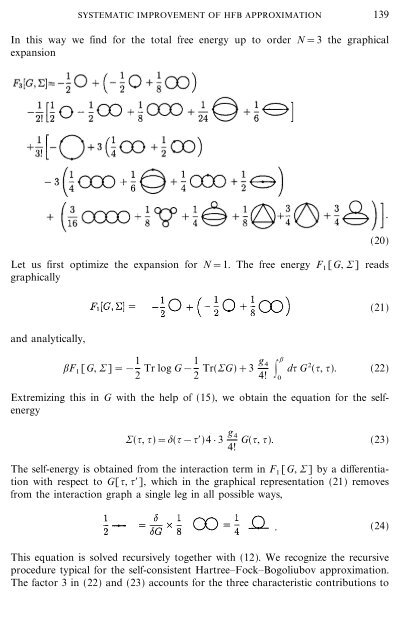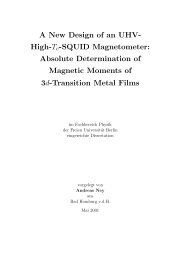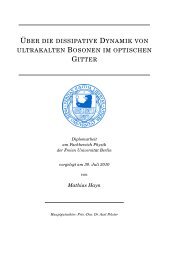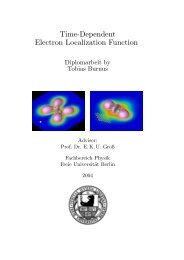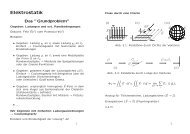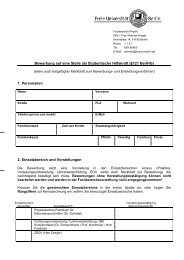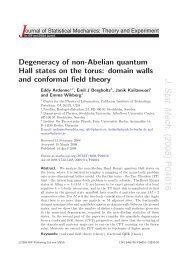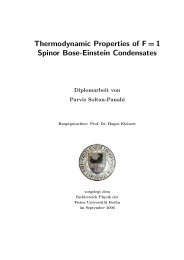ap online
ap online
ap online
You also want an ePaper? Increase the reach of your titles
YUMPU automatically turns print PDFs into web optimized ePapers that Google loves.
SYSTEMATIC IMPROVEMENT OF HFB APPROXIMATION<br />
139<br />
In this way we find for the total free energy up to order N=3 the gr<strong>ap</strong>hical<br />
expansion<br />
Let us first optimize the expansion for N=1. The free energy F 1 [G, 7] reads<br />
gr<strong>ap</strong>hically<br />
(20)<br />
(21)<br />
and analytically,<br />
;F 1 [G, 7]=& 1 2 Tr log G&1 2 Tr(7G)+3 g 4<br />
4! | ; 0<br />
d{ G 2 ({, {). (22)<br />
Extremizing this in G with the help of (15), we obtain the equation for the selfenergy<br />
7({, {)=$({&{$)4}3 g 4<br />
G({, {). (23)<br />
4!<br />
The self-energy is obtained from the interaction term in F 1 [G, 7] by a differentiation<br />
with respect to G[{, {$], which in the gr<strong>ap</strong>hical representation (21) removes<br />
from the interaction gr<strong>ap</strong>h a single leg in all possible ways,<br />
(24)<br />
This equation is solved recursively together with (12). We recognize the recursive<br />
procedure typical for the self-consistent HartreeFockBogoliubov <strong>ap</strong>proximation.<br />
The factor 3 in (22) and (23) accounts for the three characteristic contributions to


